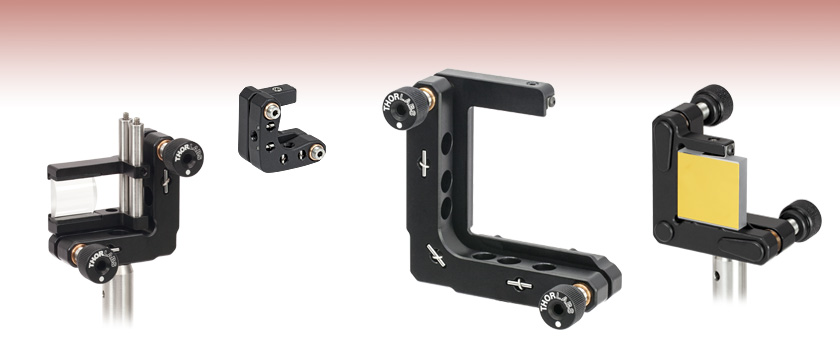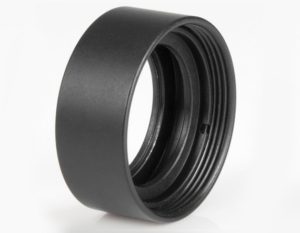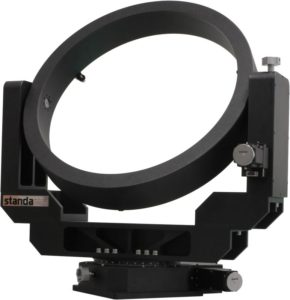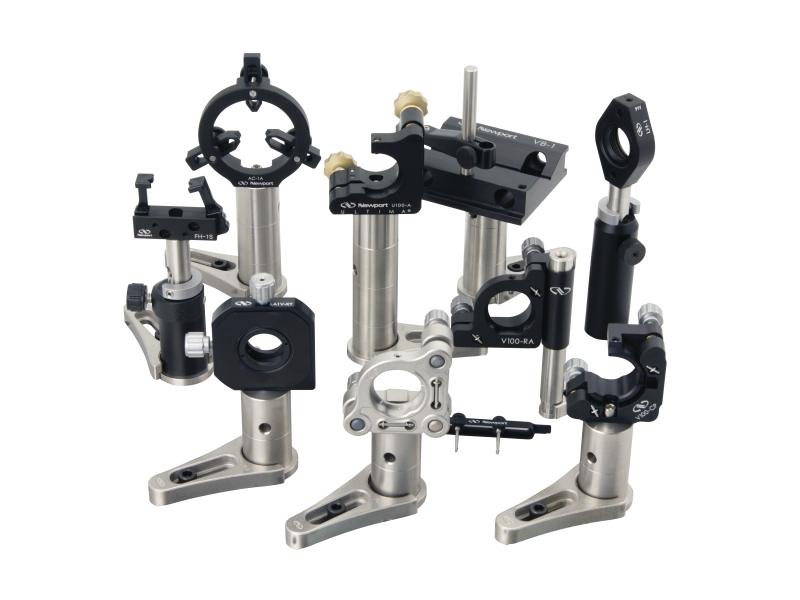
Choosing the right optical mount for your application is vital to a successful experiment. The above figure shows standard kinematic mounts. Courtesy of Thorlabs.
Introduction to an Optical Mount
Optics research and development requires stable systems due to the sensitivity of light. The most popular devices including lenses, mirrors, crystals, and polarizers often require a mounting device to tether them to an optical table. Optical mounts, however, do more than simply holding up these key components. The mounts are perhaps the most underrated components within optical systems. Researchers and engineers alike rely on mounts to maintain precision throughout the entire optical setup. Using the best fit mount is vital to building the most efficient system possible. Today we look at the different types of optical mounts and the the key factors in choosing the correct mount.

The above figure shows a standard fixed lens holder. Courtesy of Edmund Optics.
Main Types of an Optical Mount
The three main types of optical mounts include fixed, kinematic, and gimbal. While we won’t cover all the pros and cons of each throughout this article, let us first understand their fundamental differences. The different types of optical mounts attain different axes of rotation and ranges of motion. Kinematic mounts, for example, have six independent constraints. This is to say a user could adjust the mount along the x, y, z directions and also rotate the mount around each of these axes. These adjustments are not however completely independent of each other, for the axis of rotation is behind the optic. Each adjustment will therefore cause slight translation of the optic.
Kinematic mounts also have limited angular travel due to the placement of adjustment screws. Gimbal mounts, on the other hand, are not limited by screw placement of axis location. Gimbal mechanisms have axes of rotation which are fixed in space. These axes intersect at the front and center of the attached optic. Most gimbals also have a full 360 degrees of angular travel. Fixed mounts- by definition- do not rotate or translate.

The above shows a motorized gimbal mount. Courtesy of Standa.
What to Consider When Choosing an Optical Mount
While there are many aspects to take into account when designing an optical experiment or prototyping, below are 3 top considerations for selecting an optical mount:
1. Stability
Product stability is important in all optical applications. Beam path within an optical system is prone to shift due to device drift. These drifts are often not visible to the naked eye, but even small distances of beam translation can throw off an entire experiment. Ideal optical mounts are therefore stable enough to withstand considerable vibrations or changes in temperature. Thermal and vibrational stability depends mostly on the material and design of optical mounts.
Metal is a common choice for mounts because it successfully reduces the effects of shock and vibration on optical systems. Aluminum specifically combats thermal effects because of high thermal conductivity. Different mount types benefit from different design attributes to reduce shift. A few key components include a symmetrical shape, low friction joints in kinematic mounts, and actuator locks for the gimbal.
2. Precision
Adjustable kinematic and gimbal mounts often provide far superior precision when compared to fixed mounts because of their versatility in movement. Optical research typically requires extremely small, precise system changes. Fine adjustments are crucial to beam alignment and collimation. Most kinematic mounts are manually adjusted, so it is imperative to know to what extent each movement of a knob shifts the device. Many ultra-precise kinematic optical mounts attain a total working distance range of less than one millimeter.
3. Cost
As expected, the varying complexity of the different mount types means a wide spread in relative cost. In general, fixed mounts are the cheapest while kinematic tends to be more expensive. The most important factor in choosing the correct optical mount is ensuring functionality for minimal cost. Many applications may only require a fixed mount, while more complicated purposes may require the gimbal. It is important to remember, however, that the more versatile mounts typically reduce additional cost. One gimbal mount can replace a much more complex system of simple kinematic mounts. More expensive mounts can extend lifetime of the device, greatly reduce alignment time, and ultimately reduce assembly costs.

Optical mounts vary in shape, size, and function. Courtesy of Newport Corporation.
Summary of Deciding Factors
There is an optical mount for every device and application. Fixed, kinetic, and gimbal mounts range in material, motion, precision, and cost. Bigger and more complex is not always better. Fixed optical mounts will work just fine with many filters, beamsplitters, and mirrors for quick alignment. It is however worth investing in kinematic mounts where precision, adjustability, and stability are considerable concerns. Additionally, gimbal mounts are best in applications when the user does not want to change the beam path length because they eliminate beam translation. Ultimately the most important step in choosing the correct optical mount for your purposes is to match price with function.
Readers, what do you take into account when selecting an optical mount? Would you add anything to the top 3, please leave your suggestions in the comments below.

Thank you for this informative article. We didn’t realise that some of the leading brands are still using 80 or 100 tpi adjusters in their kinematic mounts… we switched to using 127 tpi in ours some time ago.